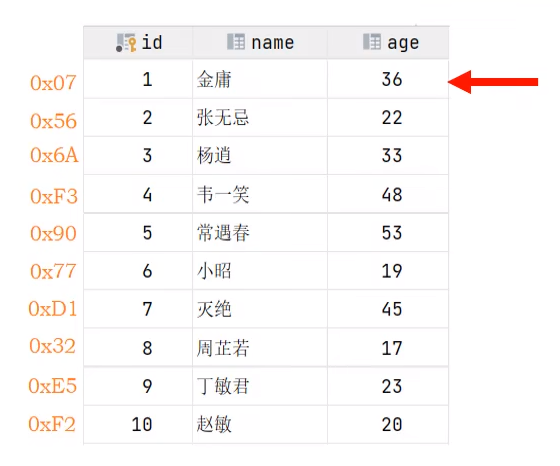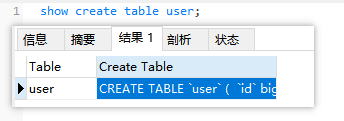springboot自动装配:
方案一:@ComponentScan 组件扫描
@ComponentScan({"com.example","com.itheima"})
@SpringBootApplication
public class SpringbootWebConfig2Application{}
方案二:@Import导入。使用@Import导入的类会被Spring加载到IOC容器中,导入形式主要有以下几种:
------------------------------------------------------
HeaderConfig.java
@Configuration
public class HeaderConfig {
@Bean
public HeaderParser headerParser(){
return new HeaderParser();
}
@Bean
public HeaderGenerator headerGenerator(){
return new HeaderGenerator();
}
}
------------------------------------------------------
TokenParser.java
@Component
public class TokenParser {
public void parse(){
System.out.println("TokenParser ... parse ...");
}
}
------------------------------------------------------
MyImportSelector.java
public class MyImportSelector implements ImportSelector {
public String[] selectImports(AnnotationMetadata importingClassMetadata) {
return new String[]{"com.example.HeaderConfig"};
}
}
------------------------------------------------------
1、导入 普通类
在启动类中加了@Import 注解之后,TokenParser类中加不加@Component 注解都可以将这个类直接交给IOC容器管理
------------------------------------------------------
@Import({TokenParser.class})
@SpringBootApplication
public class SpringbootWebConfig2Application{}
------------------------------------------------------
2、导入 配置类
配置类导入进来之后,配置类中所有的bean对象都会加载到IOC容器当中,
如HeaderConfig类中声明的 bean 的 HeaderParser 和 HeaderGenerator 也会交给IOC管理
------------------------------------------------------
@Import({HeaderConfig.java})
@SpringBootApplication
public class SpringbootWebConfig2Application{}
------------------------------------------------------
3、导入 ImportSelector 接口的实现类
ImportSelector是Spring框架中的一个接口,它用于实现在@Configuration配置类中选择性地导入需要注册到IoC容器中的bean。
在一些复杂的用例中,我们可能需要根据某些条件来动态地决定使用哪些Bean。此时,就可以使用ImportSelector接口来注册所需的Bean定义,
并将其返回给IoC容器进行统一管理。具体而言,使用@Import注解加上实现ImportSelector接口的类,就可以实现动态注册Bean的目的。
HeaderConfig类中声明的 bean 的 HeaderParser 和 HeaderGenerator 也会交给IOC管理
------------------------------------------------------
@Import({MyImportSelector.java})
@SpringBootApplication
public class SpringbootWebConfig2Application{}
------------------------------------------------------
4、EnableXxxx注解,封装@Import 注解,然后@Import 后面再来指定要导入哪些 bean 或者哪些配置类
------------------------------------------------------
@Retention(RetentionPolicy.RUNTIME)
@Target(ElementType.TYPE)
@Import(MyImportSelector.class)
public @interface EnableHeaderConfig {
}
------------------------------------------------------
@Import中导入了 ImportSelector 接口的实现类 MyImportSelector.class,
而在 MyImportSelector.class 中就指定了要导入哪些配置类和bean
第三方依赖当中提供了这个注解之后,如果要开启第三方依赖的自动配置功能,我们就不用去记要导入哪些bean和哪些配置类了,
直接加 @EnableHeaderConfig 就可以了
Springboot在启动的时候会自动加载 META-INF/spring.factories
和 META-INF/spring/org.springframework.boot.autoconfigure.AutoConfiguration.imports 文件当中所配置的信息,
当信息加载出来之后,会封装到 List<String> configurations 当中,
而List集合中的内容又会封装到 String[] selectImports 当中,而String数组中封装的数据,最终就是加载到IOC容器当中的 bean 或 配置类
自动配置原理:
@SpringBootApplication 中封装了
@SpringBootConfiguration
@EnableAutoConfiguration
@ComponentScan
而@EnableAutoConfiguration 中,封装了
@AutoConfigurationPackage
@Import(AutoConfigurationImportSelector.class)
AutoConfigurationImportSelector.class 是 ImportSelector 接口的实现类,
这个实现类中实现了ImportSelector 接口中的一个方法 String[] selectImports(...)
此方法的返回值是String类型的数组,数组中封装的是要导入到SpringIOC容器的类的全类名,
此方法中加载了两个文件
1、META-INF/spring.factories 这时springboot早期自动配置加载的文件
/*而在2.7.X版本中提供了一份全新的配置文件 AutoConfiguration.imports,
上面的 spring.factories 会在3.X.X中会被彻底移除*/
2、META-INF/spring/org.springframework.boot.autoconfigure.AutoConfiguration.imports
所以我们现在要导入的配置类就直接定义在此文件中,此文件中定义的就是配置类的全类名,
在这些配置类当中,就可以通过 @Bean 注解来声明一个一个的bean对象,
最终springboot项目在启动时就会加载 AutoConfiguration.imports 配置文件中所配置的配置类,
然后将配置类的信息封装到String[] selectImports(...)返回的String数组中,
最终通过@Import 注解将这些配置类全部加载到springIOC容器当中。
maven私服:
私服是一种特殊的远程仓库,它是架设在局域网内的仓库服务,用来代理位于外部的中央仓库,用于解决团队内部的资源共享与资源同步问题
依赖查找顺序:本地方库 -> 私服 -> 中央仓库
私服里有: central仓库、release仓库、snapshot仓库
central仓库存放的是从中央仓库下载下来的资源,
而 release仓库 和 snapshot仓库 则都是项目组内部共享的资源
项目版本:
- RELEASE(发行版本):功能趋于稳定、当前更新停止,可以用于发行的版本,存储在私服的RELEASE仓库中
- SNAPSHOT(快照版本):功能不稳定、尚处于开发中的版本,即快照版本,存储在私服的SNAPSHOT仓库中
<artifactId>tlias-utils</artifactId> <version>1.0-SNASHOT</version> 此为快照版本,如果<version>1.0-RELEASE</version>,就上传至发行版本仓库, 即使不加-RELEASE,默认也是上传至发行版本仓库
资源上传与下载:
1、设置私服的访问名/密码(settings.xml 中 servers 中配置)
-------------------------------------
<server>
<id>maven-releases</id>
<username>admin</username>
<password>admin</password>
</server>
<server>
<id>maven-snapshots</id>
<username>admin</username>
<password>admin</password>
</server>
-------------------------------------
2、IDEA的maven工程的pom文件中配置上传(发布)地址
-------------------------------------
<distributionManagenment>
//RELEASE版本
<repository>
<id>maven-releases</id>
<url>http://192.168.150.101:8081/repository/maven-releases/</url>
</repository>
//SNAPSHOT版本
<snapshotRepository>
<id>maven-snapshots</id>
<url>http://192.168.150.101:8081/repository/maven-releases/</url>
</snapshotRepository>
</distributionManagenment>
-------------------------------------
3、设置私服依赖下载的仓库组地址(settings.xml 中 mirrors、profiles 中配置)
-------------------------------------
<mirror>
<id>maven-public</id>
<mirrorOf>*</mirrorOf>
<url>http://192.168.150.101:8081/repository/maven-public/</url>
</mirror>
-------------------------------------
<profile>
<id>allow-snapshots</id>
<activation>
<activeByDefault>true</activeByDefault>
</activation>
<repositories>
<repository>
<id>maven-public</id>
<url>http://192.168.150.101:8081/repository/maven-public/</url>
<releases>
<enabled>true</enabled>
</releases>
<snapshots>
<enabled>true</enabled>
</snapshots>
</repository>
</repositories>
</profile>
-------------------------------------
4、如果需要上传自己的项目到私服上,需要在项目的pom.xml文件中,增加如下配置,来配置项目发布的地址(也就是私服的地址)
-------------------------------------
<distributionManagement>
<!-- release版本的发布地址 -->
<repository>
<id>maven-releases</id>
<url>http://192.168.150.101:8081/repository/maven-releases/</url>
</repository>
<!-- snapshot版本的发布地址 -->
<snapshotRepository>
<id>maven-snapshots</id>
<url>http://192.168.150.101:8081/repository/maven-snapshots/</url>
</snapshotRepository>
</distributionManagement>
-------------------------------------
5、发布项目,直接运行 deploy 生命周期即可 (发布时,建议跳过单元测试)


